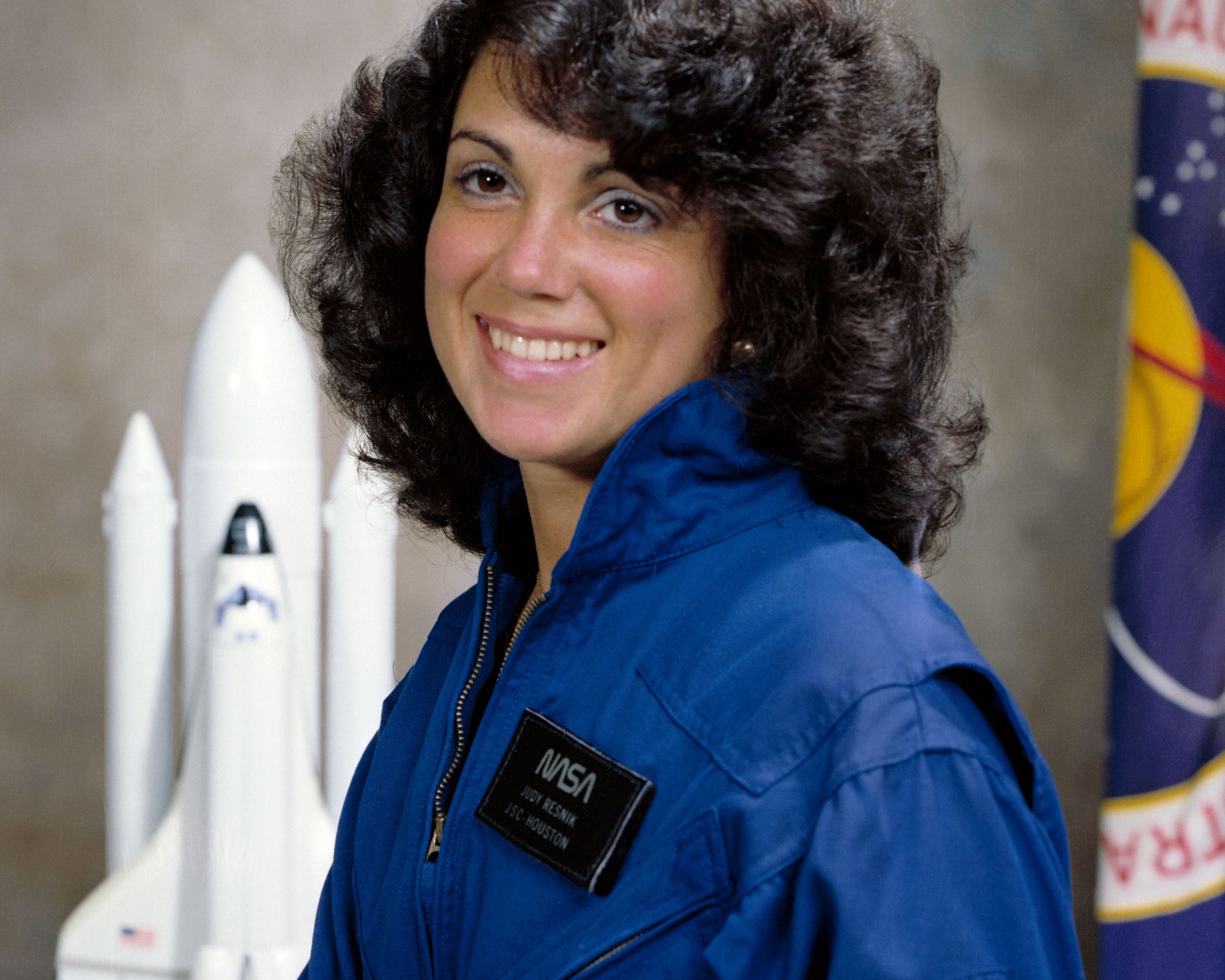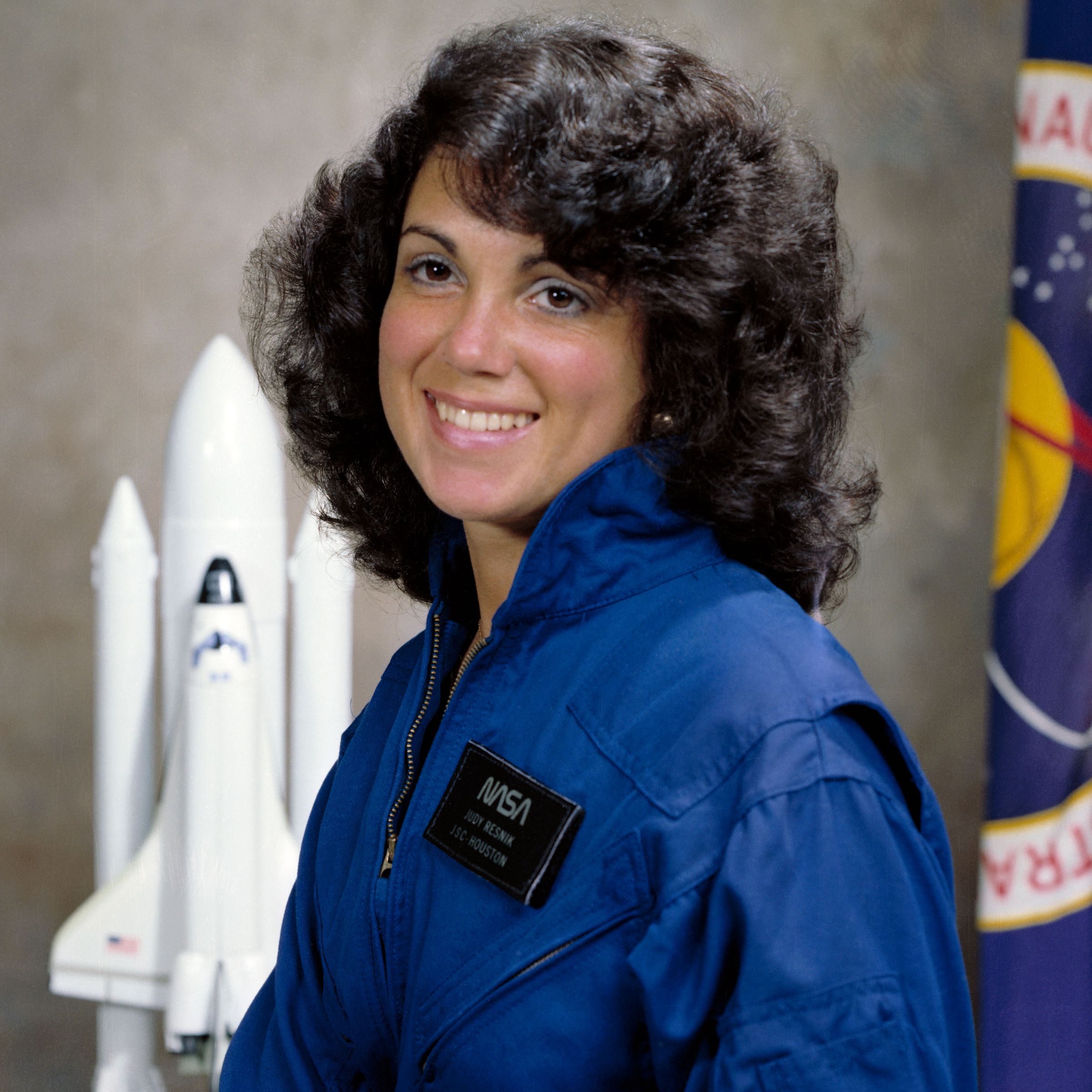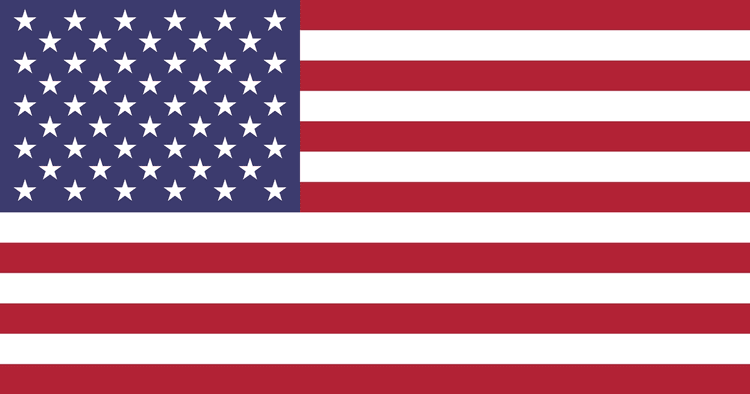




















































Selected as an astronaut candidate by NASA in January 1978, she completed a one-year training and evaluation period in August 1979. Dr. Resnik worked on various projects supporting Orbiter development, including experiment software, the Remote Manipulator System (RMS), and training techniques. Dr. Resnik first flew as a mission specialist on STS-41-D, which launched from Kennedy Space Center, Florida, on August 30, 1984. She was accompanied by spacecraft commander Hank Hartsfield, pilot Mike Coats, fellow mission specialists Steve Hawley and Mike Mullane, and payload specialist Charlie Walker. This was the maiden flight of the orbiter Discovery. During this seven-day mission, the crew successfully activated the OAST-1 solar cell wing experiment, deployed three satellites (SBS-D, SYNCOM IV-2, and TELSTAR 3-C), and operated several experiments, including the CFES-III experiment, the student crystal growth experiment, and photography experiments using the IMAX motion picture camera. The crew earned the nickname "Icebusters" for successfully removing hazardous ice particles from the orbiter using the Remote Manipulator System. STS-41-D completed 96 orbits of Earth before landing at Edwards Air Force Base, California, on September 5, 1984. With the completion of this flight, she logged 144 hours and 57 minutes in space. Dr. Resnik was a mission specialist on STS-51-L, which launched from Kennedy Space Center, Florida, at 11:38:00 EST on January 28, 1986. The crew aboard the Orbiter Challenger included spacecraft commander F.R. Scobee, pilot Commander M.J. Smith (USN), fellow mission specialists Dr. R.E. McNair and Lieutenant Colonel E.S. Onizuka (USAF), and two civilian payload specialists, G.B. Jarvis and S.C. McAuliffe. Tragically, the STS-51-L crew died on January 28, 1986, when Challenger exploded shortly after launch. Courtesy of NASA.







